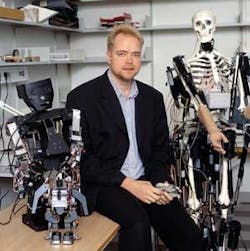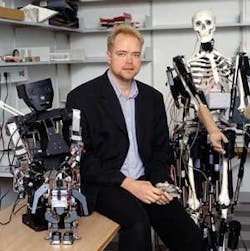By Courtney E. Howard
GOTHENBURG, Sweden–The digital battlefield of the future could be closer than we anticipated, as scientists continue to make headway in the design and development of autonomous robots.
The Institute of Robotics in Scandinavia (iRobis) in Gothenburg, Sweden, has readied for use the world’s first “complete cognitive software system for robotics,” says a representative. The software, called Brainstorm, is designed to transform robots into adaptive, problem-solving, “thinking” machines.
Roger F. Gay, iRobis vice president of business development introduced the innovation during the RoboDevelopment Conference & Expo in Santa Clara, Calif.
Brainstorm employs an automated, genetic programming (GP) methodology inspired by natural evolution, as well as learning/adaptive mechanisms that can be adjusted to requirements and turned on or off. The software system adapts automatically to the robot’s onboard sensors, builds a model of the robot on which it is installed, and automatically writes control programs for the robot’s movements. As the robot explores, Brainstorm models its environment and its learning/adaptive system enables the robot to evolve from its experiences.
An operator provides the robot with a description of a task to perform, and the robot determines how to go about completing it. “It solves problems and develops new behavior using ‘imagination,’” describes an iRobis official. “Once it has ‘learned’ to do something, it can use its imagination to adapt its behavior to a wide range of circumstances.” iRobis engineers, having already defined several basic behaviors for mobile robots, expect to expand and advance the behavioral programming at an accelerated pace. “The fact that the system builds its own programs creates an opportunity for rapid research and development through experimentation.”
The new architecture for intelligent robotics using GP was first demonstrated in 1999 in Oita, Japan, where robots were shown to have learned balance, human gait, practical use of bifocal vision, navigation, audio orientation, hand-eye coordination, and object manipulation. iRobis is working on a commercial version, expected to benefit military and non-military technologies, under a dual-use contract with the Swedish Defense Department.
“In the short-term,” reveals a representative, “iRobis expects to work directly with early commercial adopters and researchers to create prototypes with previously unseen levels of intelligent autonomous behavior and to prove the value of the system for rapid development and advanced experimentation. The search is on for the most valuable partners.” For more, visit http://irobis.com.




